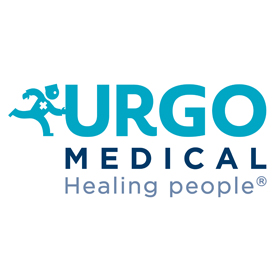Management of painful and potentially infected skin lesions: Transversal activities of community and family nursing

Submitted: March 3, 2022
Accepted: June 23, 2022
Published: July 29, 2022
Accepted: June 23, 2022
Abstract Views: 738
PDF (Italiano): 416
Publisher's note
All claims expressed in this article are solely those of the authors and do not necessarily represent those of their affiliated organizations, or those of the publisher, the editors and the reviewers. Any product that may be evaluated in this article or claim that may be made by its manufacturer is not guaranteed or endorsed by the publisher.
All claims expressed in this article are solely those of the authors and do not necessarily represent those of their affiliated organizations, or those of the publisher, the editors and the reviewers. Any product that may be evaluated in this article or claim that may be made by its manufacturer is not guaranteed or endorsed by the publisher.
Similar Articles
- Francesco Petrella, Giuseppe Nebbioso, Marcello Aquino, Mario Bellisi, Sara Carella, Rosaria Grace Catalfamo, Diletta Donateo, Pasquale Esposito, Pierluigi Gallo, Maria Grazia Mezzasalma, Stefano Riccardi, Concetta Romano, Alessandro Scanguzzi, Observational study of a gauze medication contaning Rigenase® and polyhexanide in the treatiment of venous leg ulcers (<6cm2) and perilesional skin , Italian Journal of Wound Care: Vol. 6 No. 2 (2022)
- Francesco Giacinto, Elisabetta Giacinto, Mario Giacinto, Evaluation study of the UCS® Debridement medical device in the treatment of chronic skin lesions , Italian Journal of Wound Care: Vol. 8 No. 1 (2024)
- Riccardo Garcea, The informed consent for wound care treatment: legislative - juridical analysis and proposal of a model for single treatment , Italian Journal of Wound Care: Vol. 4 No. 2 (2020)
- Francesco Giacinto, Elisabetta Giacinto, Mario Giacinto, Filomena Casciani, Domenica Ciuffoletti, Use of silver sulfadiazine 1% cream for the treatment and prevention of infected chronic leg ulcers , Italian Journal of Wound Care: Vol. 3 No. 2 (2019)
- Katia Feliziani, Arianna Dichiara, Giovanna Faccenda, Marco Romanelli, Battistino Paggi, Empowerment and patient-centered care: A therapeutic educational project for patient with venous ulcers. A pilot study , Italian Journal of Wound Care: Vol. 5 No. 1 (2021)
- Federica Buzzi, Hevan Adel Al-Atroushy, Nizar Bakir Yahya, Hozan Dilneya Rwanduzi, Stefano Maindi, Is it possible to use a 100% Medical Grade Honey in the premature babies? , Italian Journal of Wound Care: Vol. 5 No. 2 (2021)
- Elia Ricci, Monica Pittarello, Clinical evaluation of the efficacy and tolerability of a new device based on of Rigenase® and polyhexanide in the treatment of chronic skin lesions , Italian Journal of Wound Care: Vol. 6 No. 2 (2022)
- Stefano Mancin, Elena Alterchi, Silvia Finazzi, Salvatore Badalamenti, Nursing and wound care in the patient with chronic kidney disease in dialytic treatment , Italian Journal of Wound Care: Vol. 5 No. 1 (2021)
- Viviana Nebbioso, Giuseppe Nebbioso, Francesco Petrella, Daniele Naviglio, Use of biological products in the healing process of skin lesions , Italian Journal of Wound Care: Vol. 7 No. 1 (2023)
- Matteo Torresetti, Giovanni Di Benedetto, Alessandro Scalise, Is there an alternative to acellular dermal matrix for wound management? Revisiting the role of a bioactive collagen and hyaluronic acid-based dressing hyaluronic acid , Italian Journal of Wound Care: Vol. 4 No. 2 (2020)
You may also start an advanced similarity search for this article.



 https://doi.org/10.4081/ijwc.2022.87
https://doi.org/10.4081/ijwc.2022.87






